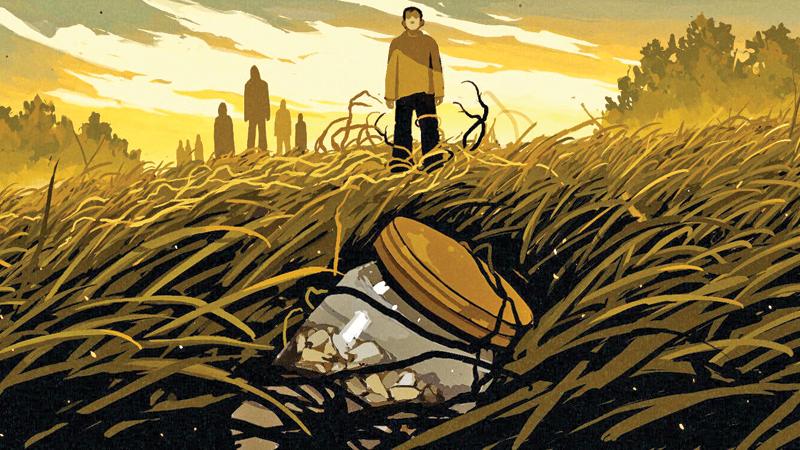
In a brash, irreverent story collection, “Night of the Living Rez,” Morgan Talty illuminates life and death on the Penobscot Indian Nation reservation.
If you had to trace a line through your history, connect your past to your present, what shape would it take? In Morgan Talty’s debut collection, ‘Night of the Living Rez,’ it forms something like a circle, one that snakes through the past but always ends up in the present, in the madness and joy of today.
Set in Maine, the book’s 12 stories illuminate life and death on the Penobscot Indian Nation reservation, where Talty was raised, in all its heaving, visceral glory. Stories explore everything from runaway daughters to infant loss and cancer, from beer runs to porcupine hunts, all of which take on vivid contours thanks to Talty’s fresh, irreverent prose. At the center of the collection is David, a Penobscot boy living on the rez, and it’s his voice, youthful, brash, angry and loving, that links all of the stories.
Curse
Talty has an incredible ability to take the seemingly disparate events of David’s life and reveal how interconnected they are, how each tiny decision becomes something bigger, how the small moments click together in ways that are heartbreaking and revelatory.
 One of the early stories finds a young David unearthing a jar of teeth. His mother claims it’s a curse, left by someone who wishes them ill, and it becomes a dark omen of what’s to come as each tale weaves through the years.
One of the early stories finds a young David unearthing a jar of teeth. His mother claims it’s a curse, left by someone who wishes them ill, and it becomes a dark omen of what’s to come as each tale weaves through the years.
Intergenerational trauma is the thread running through “Night of the Living Rez,” binding David to his mother, his sister Paige, his father and his mother’s boyfriend Frick. “She’s Native, and she has trauma. So do I,” an older David says of his mother. “But she thinks she has more. Maybe she’s right. Maybe older Natives have more trauma than younger ones.” Shared trauma closes in tightly on David through poverty, death and addiction. It holds everyone in place, as a reminder of what cannot be outrun. “There was no escaping how those problems shaped us all, no escaping the end, like the way the ice melts in the river,” Talty writes in “Food for the Common Cold.” His words are unsparing, giving a cleareyed testimonial, through David, of what it is to be in perpetual service to the inevitability of loss.
Boyhood imagination
The collection is also teeming with the undeniable physicality of the natural world, from a rotting snapping turtle whose mysterious stench fills an entire home to a roiling, writhing carpet of caterpillars that takes over a stretch of road leading in and out of the reservation.
Talty’s ability to conjure the multitude of creatures on the rez, mythic and real, that occupy young David’s boyhood imagination fills the collection with an energy that straddles the surreal, even as these animals serve as stand-ins for the acute hardships that punctuate David’s life.
In “Get Me Some Medicine,” the “stinking carcass” of a porcupine becomes the key figure in an idle game of cards that ends in a fistfight. In “In A Field of Stray Caterpillars,” that aforementioned mass of caterpillars is a physical and psychic barrier for a relationship David cannot, or will not, cleave. “I wondered if there was a way around those dead caterpillars,” he says. “But I knew there wasn’t.”
Though this is Talty’s first book, it’s a remarkable collection that calls to mind the stories of Anthony Veasna So, whose debut, “Afterparties,” so captured Cambodian American life in California. Both Talty and Veasna So have electric, captivating voices that manage to channel grief, trauma, boyhood and brutality in their totality.
Interconnected
With ‘Night of the Living Rez’, Talty has assured himself a spot in the canon of great Native American literature. This is a collection where a simple quest for weed can turn into rescuing a friend whose hair has been frozen to the ground, where everything small is connected to something bigger, something powerful. And in revealing those connections, Talty forms a rich and vast picture of what it is to be alive, with stunning clarity, empathy and unwavering honesty.
Amil Niazi is a writer and editor whose work has appeared in New York magazine, The Guardian and The Washington Post.
Source: The New York Times
